For “Travel Tuesday”: Let’s visit The Big Thicket, TX
“Historical limits of the Big Thicket region prior to the Texas Revolution. Deforestation has dramatically reduced its size.
"One's fondness for the area is hard to explain. It has no commanding peak or awesome gorge, no topographical feature of distinction. Its appeal is more subtle." - Big Thicket Legacy, University of Texas Press, 1977.
The terrain in the Big Thicket is unremarkable and offers none of the impressive views that can be found in many other National Parks and Preserves. The area lies on the flat coastal plain of Texas, and is crossed by numerous small streams. The extent of the region was once much larger than today covering more than 2 million acres (8,100 km) in east Texas. The Spaniards, who once ruled the region, defined its boundaries in the north as El Camino Real de los Tejas, a trail that ran from central Texas to Nacogdoches; in the south as La Bahia Road or Atascosito Road, a trail that ran from southwest Louisiana into southeast Texas west of Galveston Bay; to the west by the Brazos River; and to the east by the Sabine River. Timber harvesting in the 19th and 20th centuries dramatically reduced the extent of the dense woodlands.
The Big Thicket's geographical features are believed to have their origins with the Western Interior Seaway, an inland sea that covered much of North America during the Cretaceous period. Over time, water smoothed out the land along what is now Texas's coastline.
Small towns are contained within the Big Thicket. Most of these towns developed in the late 19th century in support of the lumber industry, as evidenced by names like Lumberton. As transportation through the area improved (including the construction of US 59, US 69 and 96), many of the towns slowly became suburbs of the much larger cities of Houston and Beaumont to their south.”
_____________
The Big Thicket National Preserve
 “You'll want to schedule time to visit some of the great attractions found in the Big Thicket area. You'll find everything from historical and natural sites to art, shopping, dining and even an Indian Reservation.
“You'll want to schedule time to visit some of the great attractions found in the Big Thicket area. You'll find everything from historical and natural sites to art, shopping, dining and even an Indian Reservation.
The Big Thicket National Preserve is one of the most popular attractions in the area. The Preserve is home to hundreds of unique species of wildlife and natural wetlands. You can hike, bike, and enjoy other fun and educational activities with the new visitor center.
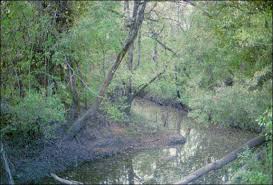 Canoeing along Village Creek, the Neches River, or through the Big Thicket is one of the most popular activities for visitors. Several area canoe outfitters offer the options of renting you own canoes for the day or signing up for one of their guided tours.
Canoeing along Village Creek, the Neches River, or through the Big Thicket is one of the most popular activities for visitors. Several area canoe outfitters offer the options of renting you own canoes for the day or signing up for one of their guided tours.
“Several festivals and events are held throughout the year such as the antique car show, the 4-wheeler Mud Fest, old fashioned Cane Syrup Making, monthly Trade Days and more.
Beautiful golf courses, gorgeous bicycle trails, horseback riding, bird watching, canoeing, fishing, hunting and hiking are a few of the activities available for the outdoor enthusiast.” To find out more, you can visit the Big Thicket Directory website.”

Big Thicket National Preserve (National Park Service)
“The "Big Thicket"—now there's a resonant name, one that conjures images of Grimm Brothers' fairytales and Blair Witches. But in this 83,000-acre swath of East Texas's Piney Woods, truth may just be stranger than fiction: Dank, dark, and overgrown, the Big Thicket is a maze of swamps, rivers, and impenetrably dense forests, a place both weird and wonderful. There aren't many undiscovered gems left in the National Parks and Preserves system, but Big Thicket is one of them.” Read more: http://www.gorp.com/parks-guide/big-thicket-national-preserve-outdoor-pp2-guide-cid8813.html#ixzz1wC0OueS5
______________
“Just a few hours from Houston, laid-back adventure beckons at Martin Dies Jr. State Park. Located in the northern section of the Big Thicket area.”
Best Place to Channel Your Inner Angelina
“If you want to see East Texas as the Native Americans did, take a guided canoe trip down the Angelina and Neches Rivers from Martin Dies Jr. State Park, says naturalist interpreter Katherine Crippens. “This trip is the best way to see the backwater sloughs and bayou areas between the two rivers and enjoy the flora and fauna of the area.” Trips are offered the third Saturday of the month. Can’t get to East Texas?”
Take the trip on YouTube:
Martin Dies, Jr. State Park, north of Beaumont, sits on the edge of the Big Thicket National Preserve. Experience the magic of the east Texas piney woods by paddling through the cypress swamp or hiking under the tall trees.”
“Martin Dies, Jr. State Park, until 1965 known as the Dam B State Park, is a 705-acre recreational area in Jasper and Tyler Counties between Woodville and Jasper on B. A. Steinhagen Reservoir (15,000 acres). The land for the park was acquired under a 50-year lease from the U.S. Army Corps of Engineers in 1964 and was opened in 1965.

“Flora/Fauna: Located at the edge of the Big Thicket National Preserve, the park is in the heavily-forested area known as the "East Texas Pineywoods." The park has numerous creeks, known as sloughs, and cypress, willow, beech, magnolia and sweet bay are common. Each fall the golden hues of beeches are brilliant against the reds of blackgums and oaks, mixed among the evergreen pines. Hiking trails provide excellent opportunities to view wildlife, including woodland warblers, woodpeckers, bluebirds, herons, wood ducks, cranes, and alligators, as the park is adjacent to Angelina-Neches-Dam B Wildlife Management Area.”
------------
Floating the Forks, By Mary-Love Bigony
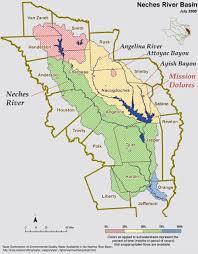
“Known by generations of locals as "The Forks," the swampy forest at the confluence of the Angelina and Neches rivers seems as wild and untamed today as it must have seemed when Anglo-American settlers began moving into Southeast Texas in the 1830s. Accessible only by boat, the shady, winding backwater sloughs harbor a variety of birds, animals and legends.
“The Forks was wild country," wrote the late Dan Lay of a 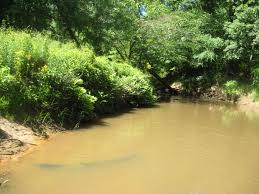 boat trip he took through the area in 1938.
boat trip he took through the area in 1938.
"Endless sloughs snaked among cypress and tupelo gum trees, and oaks lined the banks. Alligators sank beneath the water.
A few years before, deer hunters on one of the sloughs shot a 'gator that weighed more than 1,200 pounds. According to legend, ivory-billed woodpeckers still lived there."
 Today the Forks and the acres surrounding it are part of the Angelina-Neches/Dam B Wildlife Management Area. Once a month, Martin Dies, Jr. State Park offers a guided canoe trip down the Angelina and Neches rivers and into the Forks. Together, the state park and adjacent wildlife management area provide a unique East Texas experience year-round for canoeists and kayakers, as well as campers, hikers, anglers and cyclists.”
Today the Forks and the acres surrounding it are part of the Angelina-Neches/Dam B Wildlife Management Area. Once a month, Martin Dies, Jr. State Park offers a guided canoe trip down the Angelina and Neches rivers and into the Forks. Together, the state park and adjacent wildlife management area provide a unique East Texas experience year-round for canoeists and kayakers, as well as campers, hikers, anglers and cyclists.”
“Bee Tree Slough comes in on river right about a half mile below camp. Here the river bends south, shortly to join the Neches. Turn north into a large bay that is the mouth of the slough.
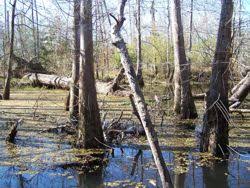 Bee Tree Slough winds into a vast hardwood bottom land swamp, forming a passage between the Angelina and the Neches. The many species of oaks here drop a vast amount of acorns that cover the forest floor and float on the swamp, providing food for ducks, geese, hogs, deer and other wildlife. Paddle the slough through to the Neches then down to the take out at the State Park.”
Bee Tree Slough winds into a vast hardwood bottom land swamp, forming a passage between the Angelina and the Neches. The many species of oaks here drop a vast amount of acorns that cover the forest floor and float on the swamp, providing food for ducks, geese, hogs, deer and other wildlife. Paddle the slough through to the Neches then down to the take out at the State Park.”
--------------
Alabama-Coushatta Indian Reservation

Children's Pow Wow, 2011
“One of only three Indian reservations in Texas, the Alabama-Coushatta reservation represents the distinctive heritage of this small yet proud group. Until recently, the tribe offered tours, a museum, and cultural events for tourists; unfortunately, these services are no longer in operation. Regardless, visitors are encouraged to spend time at the reservation’s campground or fishing on 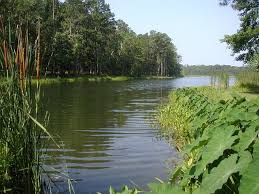 Lake Tombigbee.
Lake Tombigbee.
Despite the recent closing of the tribe’s cultural facilities, the reservation still operates the popular Lake Tombigbee Campground, offering primitive sites, teepees, full-capacity RV stations, new restrooms with bathhouses, swimming areas, and hiking and nature trails.”
Baskets made by the Alabama Coushatta.
“Nestled deep in the Big Thicket area of East Texas' oldest Indian Reservation, home of the Alabama-Coushatta Indian Tribes. The Reservation is located on 4,600 acres of verdant timberland and lies close to the center of the Big Thicket. It was established by Sam Houston in 1854 as a reward to the Alabama-Coushatta Indians for the courage they displayed in remaining neutral during the Texas War for Independence from Mexico.
A convenience store is located on the reservation (intersection of U.S. Hwy 190 and FM 2500) with gasoline and some souvenir items. Complete camping facilities are available: primitive sites to RV stations with full hook-ups around the shimmering 26-acre Lake Tombigbee, stocked with game fish waiting to be caught. Area lighting, picnic tables, fire rings, drinking water, swimming area, hiking and nature trails are available.
 Though the Alabama-Coushatta Tribe no longer operates their tourism facilities at this time, special events are scheduled throughout the year, including the annual Powwow in June and the Music Festival and Fireworks in July. Please call for specific times and dates.”
Though the Alabama-Coushatta Tribe no longer operates their tourism facilities at this time, special events are scheduled throughout the year, including the annual Powwow in June and the Music Festival and Fireworks in July. Please call for specific times and dates.”
About the Tribe: http://www.texasindians.com/albam.htm
_____________
Ghost Road

“The Light of Saratoga is a legend located in the Big Thicket of Southeast Texas. A dirt road leading north out of the town of Saratoga is the core of the area's predominant ghost story. Bragg Road, as it is more formally known, was constructed in 1934 on the bed of a former railroad line that had serviced the lumber industry.
In the 1940s, stories began to circulate about a mysterious light, sometimes referred to as the Light of Saratoga, that could be seen on and near the road at night. No adequate explanation of the light has been offered. The various ghost stories include reference to the Kaiser Burnout, long-dead conquistadors looking for their buried treasure, a decapitated railroad worker, and a lost night hunter eternally searching for a way out.
Less paranormal explanations include swamp gas, and automobile headlights filtering through the trees.
_____________
On This Day:
Hillary and Tenzing reach Everest summit, May 29, 1953:
“At 11:30 a.m. on May 29, 1953, Edmund Hillary of New Zealand and Tenzing Norgay, a Sherpa of Nepal, become the first explorers to reach the summit of Mount Everest, which at 29,035 feet above sea level is the highest point on earth. The two, part of a British expedition, made their final assault on the summit after spending a fitful night at 27,900 feet. News of their achievement broke around the world on June 2, the day of Queen Elizabeth II's coronation, and Britons hailed it as a good omen for their country's future.
Mount Everest sits on the crest of the Great Himalayas in Asia, lying on the border between Nepal and Tibet. Called Chomo-Lungma, or "Mother Goddess of the Land," by the Tibetans, the English named the mountain after Sir George Everest, a 19th-century British surveyor of South Asia. The summit of Everest reaches two-thirds of the way through the air of the earth's atmosphere--at about the cruising altitude of jet airliners--and oxygen levels there are very low, temperatures are extremely cold, and weather is unpredictable and dangerous.
Since Hillary and Norgay's historic climb, numerous expeditions have made their way up to Everest's summit. In 1960, a Chinese expedition was the first to conquer the mountain from the Tibetan side, and in 1963 James Whittaker became the first American to top Everest. In 1975, Tabei Junko of Japan became the first woman to reach the summit. Three years later, Reinhold Messner of Italy and Peter Habeler of Austria achieved what had been previously thought impossible: climbing to the Everest summit without oxygen. Nearly two hundred climbers have died attempting to summit the mountain. A major tragedy occurred in 1996 when eight climbers from various nations died after being caught in a blizzard high on the slopes.”
___________
Bob Hope celebrates 100th birthday, May 29, 2003:
“Thanks for the memory”. “Some 35 U.S. states declare it to be Bob Hope Day on this day in 2003, when the iconic comedic actor and entertainer turns 100 years old.
In a public ceremony held in Hollywood, city officials renamed the intersection of Hollywood Boulevard and Vine Avenue--famous for its historic buildings and as a central point on the Hollywood Walk of Fame--Bob Hope Square. Several 1940s-era U.S. planes flew overhead as part of an air show honoring Hope’s longtime role as an entertainer of U.S. armed forces all over the world. Hope, who was then suffering from failing eyesight and hearing and had not been seen in public for three years, was too ill to attend the public ceremonies. Three of his children attended the naming ceremony, along with some of his younger show-business colleagues, including Mickey Rooney.
One of the leading talents on the vaudeville scene by the 1930s, the London-born, American-raised Hope met his future wife (of nearly seven decades), the nightclub singer Dolores Reade, while he was performing on Broadway in the musical Roberta. They married in 1934, and four years later Hope launched his own radio program, The Bob Hope Show, which would run for the next 18 years. One of the country’s most popular comics, Hope had a successful film career largely thanks to the series of seven “Road” movies he made with Bing Crosby and Dorothy Lamour, including Road to Singapore (1940), Road to Morocco (1942), Road to Utopia (1946) and Road to Rio (1947).
In 1941, after America’s entrance into World War II, Hope began performing for U.S. troops abroad; he would play shows for more than a million American servicemen by 1953. Some 65 million people watched him perform for troops in Vietnam on Christmas Eve in 1966, in his largest broadcast. Hope also became a legend for his countless TV specials, which he would perform over the course of some five decades. He hosted the Academy Awards ceremony a total of 18 times, more than any other Oscars host.
Dubbed “Mr. Entertainment” and the “King of Comedy,” Hope died on July 27, 2003, less than two months after his 100th birthday celebration. He was survived by Dolores, their four adopted children--Linda, Anthony, Nora and Kelly--and four grandchildren.”
_____________
Yesterday:
Jay called me early, said he was ready to work, and start early, too. Misty and I went to get him an hour early, but he wasn’t ready, so we still only started working a half an hour earlier than usual.


There is a strip of carpet on the wall, so that the Formica on the table top won’t rub on the paneling.
The removable bed base was put up there and then the mattress:
This is the view from the outside with the big rear cargo door open.
The right side of the dinette’s cushions are stood up behind the mattress, as well as the table, pole, and bed base. The left side of the dinette can still be used like this. Jay wants to hang the mattress from a sling in the ceiling, but I think it would block the roof vents if one had to stop somewhere when whatever toy(s) are loaded in there. I think as everything fits right there, why not leave it alone.
The weather was warm, but I didn’t have to turn the house AC on until lunch time, so Prime enjoyed being out on the screen porch all morning. Still no news from her potential new ‘Mom’.
We felt like we accomplished something yesterday.



















2 comments:
Looks like your project is almost done.
Thank you for your comment, DD.
Just a few little punch-out jobs, now. But they seem to take the most time.
Happy Tails and Trails, Penny, TX
Post a Comment